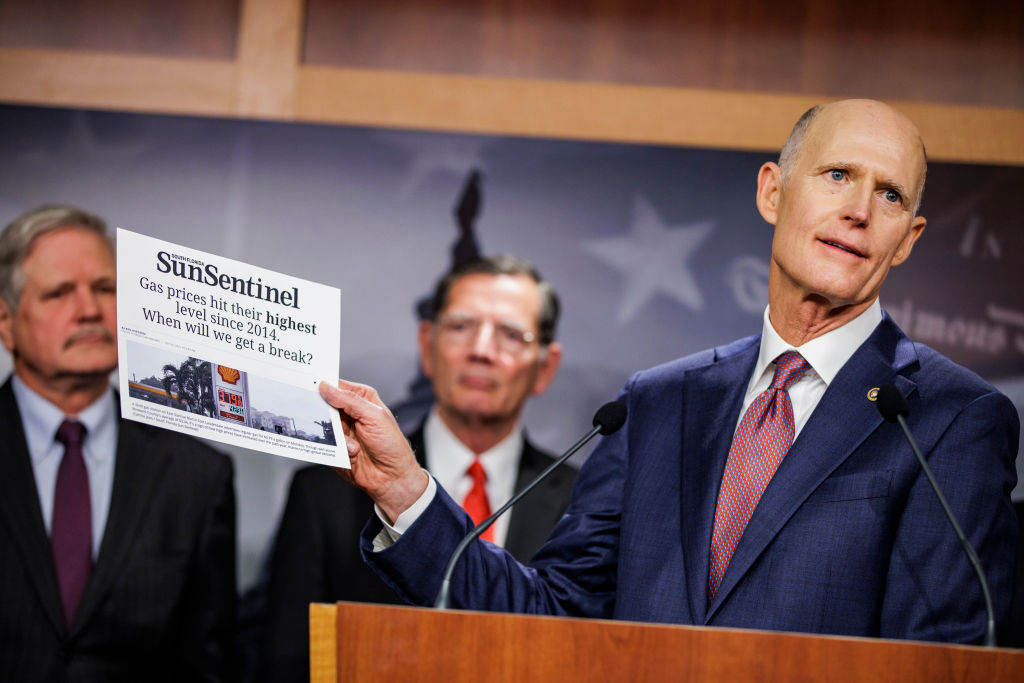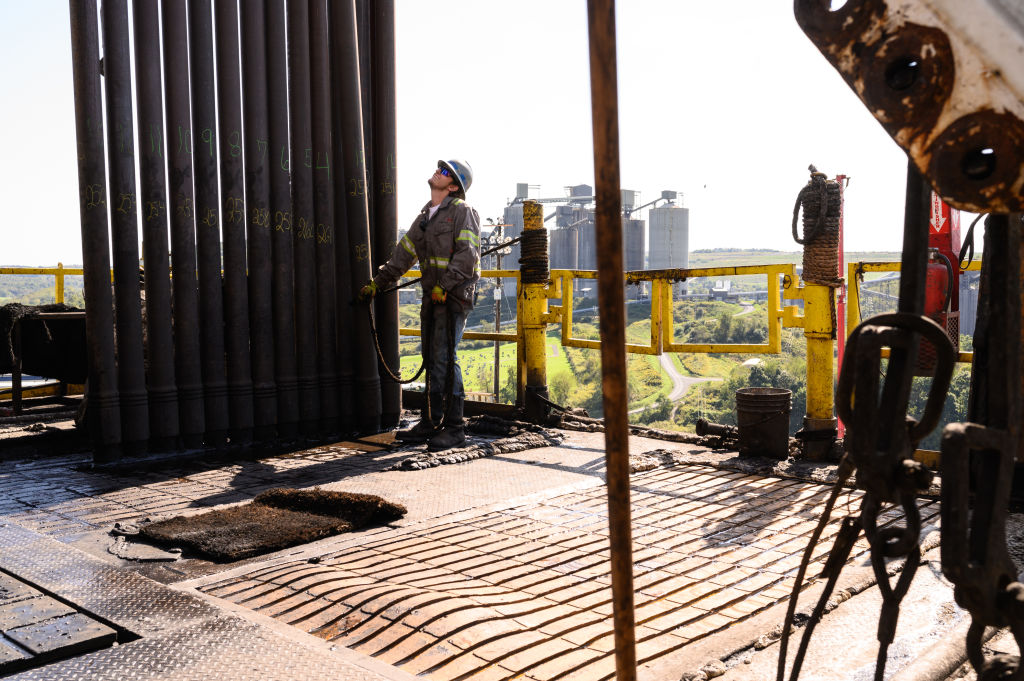Your energy bills are probably going up. The average price of gasoline in the U.S. is currently $3.38 a gallon, 56% more than a year ago. This winter, the roughly half of U.S. homes heated by natural gas could see as much as a 30% hike in their bills and increases will be even steeper for the few that use propane and heating oil.
U.S. consumers are far from alone in the energy price crunch: in Europe, which relies much more heavily than the U.S. on imports for its natural gas supply, the fuel currently costs four times more per megawatt hour than it did in January, panicking governments over the potential impact on household heating bills as temperatures begin to fall. In China, surging demand for coal has led to severe shortages at power stations and in industry, and skyrocketing prices.
Some business leaders and politicians say the price spikes for these fossil fuels are evidence that the world is moving too fast to phase them out of energy systems as we try to reduce greenhouse gas emissions. In the U.S., Republicans have tried to link the rising fuel costs to the Biden Administration’s push for climate action. The head of Saudi Arabia’s state oil company, which does not plan to end production for decades, told Sky News last week that the world needs to stop “demonizing” the fossil fuel sector and work with it to prevent “a global economic crisis due to lack of supplies.” China’s latest national climate plan, published Sunday, said that going forward, officials must balance emissions reduction with energy security to “prevent overreaction and ensure safe carbon reduction.”
But there is no evidence we are phasing out fossil fuels too quickly. In fact, a U.N. report published Tuesday found that, under current plans, the world’s largest economies will be producing more than double the amount of coal, oil and gas in 2030 than would be compatible with the goal of the 2015 Paris Agreement of limiting global warming to 1.5°C over the preindustrial era.
Climate advocates say today’s energy price hikes are exposing the volatility of fossil fuel prices, and strengthen the case for a rapid transition to non-polluting and cheaper renewable energies.
The speed of the transition from fossil fuels to clean energy is the main topic on the table at COP26, the crucial U.N. summit that kicks off in Glasgow on Oct. 31. Negotiators and leaders from almost 200 countries at COP26 will try to reach an agreement on how to cut greenhouse gas emissions to avoid the worst consequences of climate change. The deals they strike could have lasting consequences for the way people heat their homes, power their cars and charge their cell phones—and how much they pay to do so.
Here’s what to know about how the energy transition—and decisions made about it in November at COP26—will affect the price of energy.

Are efforts to phase out fossil fuels causing the price spikes?
No. Energy experts say the main thing driving global energy prices up is the emergence from the pandemic, coupled with volatility that is built into gas and oil markets. When COVID-19 lockdowns shuttered economic activity around the world in early 2021, demand for energy plummeted, so prices did too. That led to falls in production. “In the U.S., for example, our natural gas system is very price responsive, so nobody drilled when prices were so low,” says Samantha Gross, director of the Energy Security and Climate initiative at the Brookings Institution. “So now the gas that would have been produced from those wells isn’t there, meanwhile demand is just skyrocketing as the economy is recovering. And the system is just not quite balanced yet.”
Other factors have worsened the crunch. A cold spring in Europe and cold winter last year in China increased demand and cleared most of the reserves that are held in storage. Weather conditions have also dampened the production of renewable energy: a drought in South America, for example, has limited hydropower output, and windless periods in the U.K. have slowed turbines.
But overall, renewables have actually been helping to stabilize prices, Gross says. Though wind and solar production in particular fluctuate with the weather, that doesn’t have nearly as large an impact on their price as shifts in the global oil and gas markets have on those fuels. The cost of wind, solar and hydropower (which together provide 18% of U.S. electricity generation) have remained stable—and low—throughout 2021.

How will the transition to clean energy affect prices?
It will probably bring them down. Renewable energy prices are falling much faster than analysts had predicted, with the cost of producing electricity from solar power down 89% over the last decade. “It’s already cheaper to build new solar or wind projects than to continue operating most coal plants around the world,” says Morgan Rote, a senior manager on U.S. climate policy at the Environmental Defense Fund.
If renewables can be expanded to make up a much larger share of the national energy mix, the savings will reach consumers. A report published this month by the Rhodium Group, a New York-based research firm, found that policies put in place to curb U.S. emissions in line with President Biden’s 2030 target would save households an average of $500 a year in energy costs.
There’s evidence that renewables are already having a positive impact on prices: a 2016 report by the U.S. Department of Energy and Berkeley University of California found that policies to encourage the production of renewables in 29 states and Washington, D.C., had reduced wholesale electricity prices, saving consumers up to $1.2 billion. They also reduced demand for and prices of natural gas, saving consumers up to $3.7 billion.
There are things that governments and businesses need to do to make sure the transition to clean energy runs smoothly for consumers, Rote says. To use renewables like wind and solar at a much larger scale, countries need to invest in modernizing their electricity grids and in developing technologies to store large amounts of energy, to deal with longer periods when the sun isn’t shining and the wind isn’t blowing.
And, though fossil fuel advocates today are wrong to blame current price hikes on a rush to stop burning oil and gas, it’s true that we can’t shut down fossil fuel supplies before we have adequate supply of renewables available. “That is clearly from an economic perspective, from a price and equity perspective all around the world, just not what you want to do,” Gross says. “But as long as somebody is assuring adequate supply, I don’t think it necessarily has to involve giant price spikes.”
Can COP26 solve the current energy crisis?
No. Scaling up clean forms of energy to carry more of global demand will take years. The only thing that governments can do right now to reduce the price of oil and gas is to get more oil and gas in circulation. That’s why President Biden has appealed to Saudi Arabia and other oil producing nations to step up drilling this year and why E.U. leaders breathed a sigh of relief on Thursday when Russian President Vladimir Putin ordered state gas giant Gazprom to fill European storage facilities, triggering a welcome fall in prices.
The apparent conflict between the long-term need to cut out fossil fuels and the short-term need for them to keep the lights on may make things awkward for leaders at COP26. Countries like Russia and Saudi Arabia, whose economies depend on fossil fuels and who have failed to come up with plans for an alternative, will try to use the current price crunch to justify a slower phase out of them and weaker emissions targets. Oil lobbyists in the U.S., meanwhile, are framing Biden’s calls for the industry to cut prices as ironic, given recent decisions seen as hostile to the sector, such as scrapping the Keystone XL pipeline from Canada.
But COP26 is an opportunity to set the world on a course for cheaper and more stable energy bills in the long run, experts say. Expanding investment in renewables is a central goal of COP26, and if a few major economies use the summit to announce large spending packages, it would create important momentum for the sector. On Thursday, the Biden Administration announced a $555 billion package of tax credits, grants and other policies to boost clean energy—the largest such investment in U.S. history—which it hopes to pass through reconciliation.
“The decisions being made right now in congress and at COP 26, are going to have dramatic changes to how we consume energy, and how we supply energy around the world,” Rote says. “We can’t delay making the right decisions, and expect the situation to get better.”
More Must-Reads From TIME
- The 100 Most Influential People of 2024
- The Revolution of Yulia Navalnaya
- 6 Compliments That Land Every Time
- What's the Deal With the Bitcoin Halving?
- If You're Dating Right Now , You're Brave: Column
- The AI That Could Heal a Divided Internet
- Fallout Is a Brilliant Model for the Future of Video Game Adaptations
- Want Weekly Recs on What to Watch, Read, and More? Sign Up for Worth Your Time
Write to Ciara Nugent at ciara.nugent@time.com